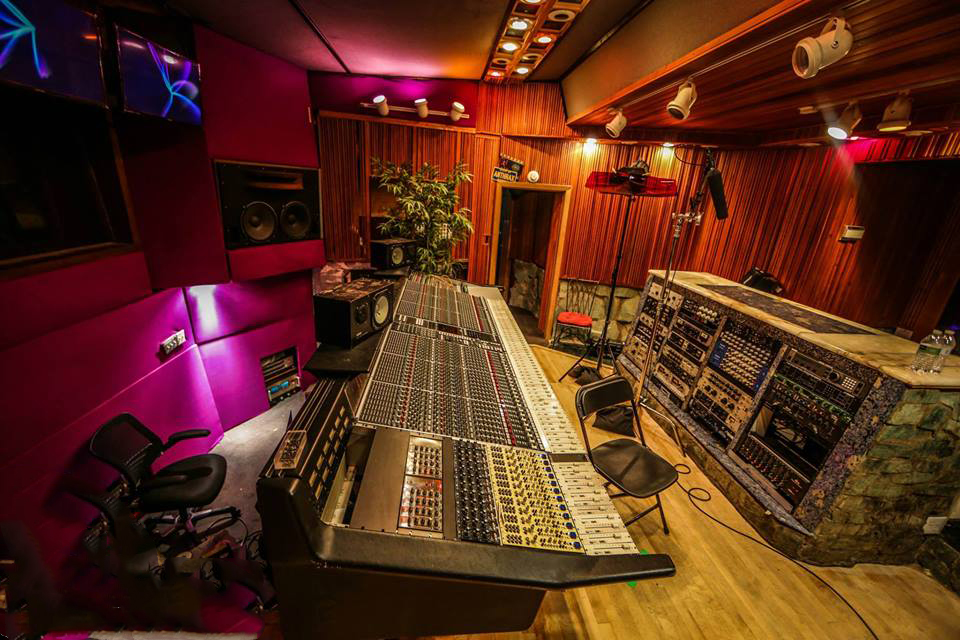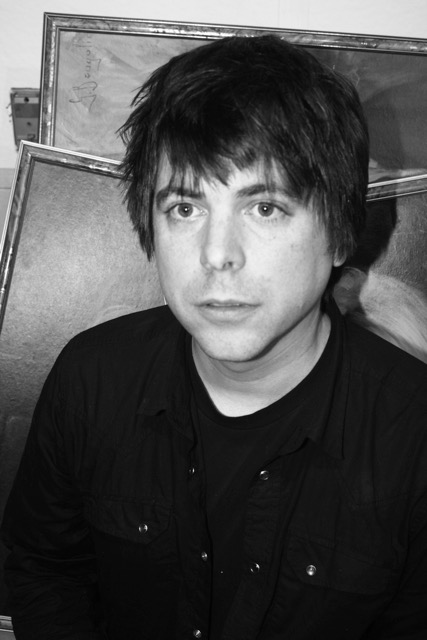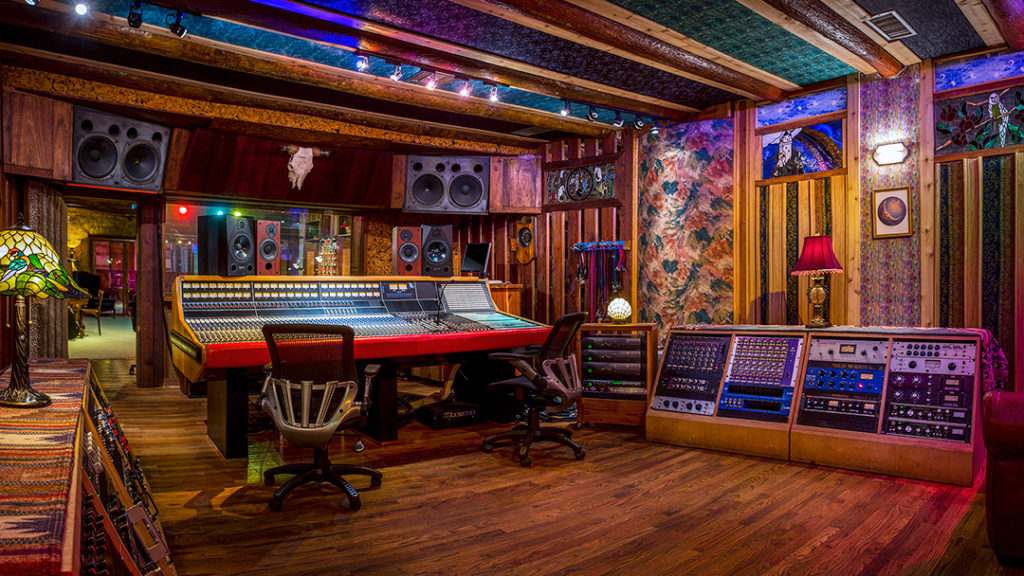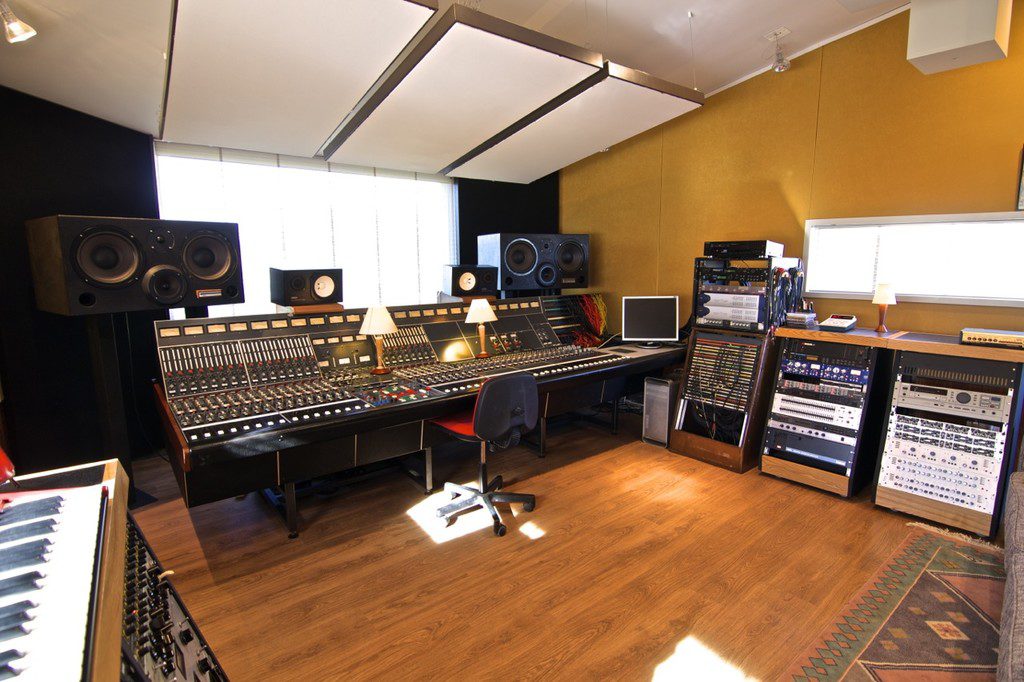John Goodmanson on Recording Bass, Picking References, Landing Repeat Clients & Producing in the Pacific Northwest
John Goodmanson is a producer, engineer and mixer who has made his name working with critically-acclaimed artists like Death Cab for Cutie, Sleater-Kinney, Blonde Redhead, Pavement, Blondie and Nada Surf.
Although he’s best known for his work in the indie rock world, this Pacific Northwest-based producer has made occasional forays into other genres as well, most notably with Wu-Tang Clan.
Most recently, Goodmanson has produced and mixed Wolf Parade’s latest LP, Cry Cry Cry, out now on Sub Pop Records. I tracked him down to ask him all about his process and approach.
Can you tell us a little bit about your experience working on the new Wolf Parade LP?
We did basics and mixed at Robert Lang Studios in Seattle. I’ve done [many] projects there, from The Blood Brothers to Brandi Carlile. It’s a big tracking room, but it’s also an SSL room that works well for me for mixing.
There are a number of acoustic spaces in Studio A and we were able to isolate the grand piano for the live takes so that piano rhythm parts could be tracked with the band. [That] made a huge difference for the record, since Spencer [Krug]’s songs tend to be written at the keyboard. He’s an excellent player.

A view of Robert Lang Studios in Seattle, where Goodmanson recorded and mixed Wolf Parade’s latest release, Cry Cry Cry.
There’s also an interesting reverb chamber right off of the control room where we put the guitar amps. We tracked room mics with the guitars and wound up using them quite heavily in the mix.
I tend to set most bands up that way at Robert Lang’s, since there is the space to do it, but I think I wound up keeping the live takes and overdubbing less on this record than I do on a more typical rock production.
What about the overdubs and mixing—you did some of that in Canada?
Overdubs were done at a studio called Noise Floor in [British Columbia]. It was a bit more rustic, but super fun. Way out in the woods, but with plenty of interesting gear to mess with. It was really nice to get a change of scenery halfway through. We also had a break in between sessions over the holidays and were able to come back with a list of what we needed to get done.
Mixing was back at Robert Lang’s in Seattle. The band came down for the mix and we were able to knock it out without too much fuss. I tend to track the sounds cooked like they will be in the final mix, so in an ideal world the mix is just about making it sound great and doesn’t involve too much head-scratching.
You’ve done repeat mixing and producing jobs for bands like Death Cab for Cutie, Sleater-Kinney, Blonde Redhead, Nada Surf. Can you share any insight into how engineers and producers can build strong relationships with bands, get repeat work, and grow with a band over the course of their career?
Always remember it’s the band’s record—not yours. It’s your job to facilitate their vision and highlight their strengths. I get to make lots of records. Each band gets to make one every one or two years at best.
[That’s] not to say a band doesn’t need to be told when something isn’t working, or when they are fighting against their own interests or fighting against the song. Bands can get lost during the writing and recording process. But dang, respect a band’s individuality and value the creation of a work of art. It’s so not about you.
Good advice. Getting a little more more in-depth, you’ve gottem some really great bass sounds. How do you usually record bass guitar?
Bass guitar is the most difficult rock instrument to record. The player, the instrument, the amp, and the monitoring environment all have a huge impact on the recording and your perception of it. Physics is a beast and there is no getting around it. Then room and speakers are going to mess with the low end. Be sure and check the bass and the low end in headphones. If you don’t trust the room, wait to process the bass in the mix.
Remember, you don’t have to do anything to it. Sometimes it’s easy to mess with the bass too much. If it’s a good player with a good instrument you can take all the processing away and the sound opens up and gets bigger.
I usually record an amp signal and a separate DI, but I most often only use the DI in extreme emergencies. If all else fails I can re-amp the bass or use a virtual amp plug in to tune the bass sound in the context of the full track.
It can be tricky because often, the bass goes down with the drums as one of the first instruments recorded. This is the big guitar and fuzz bass problem: You think you’ve got the fuzziest bass sound ever, and then you get the guitars built and they cover it up completely and it sounds like a normal bass again. If you re-amp the bass after you record guitars, you can adjust the amp so that it cuts through the guitar wall.
Another solution is to record a separate amp for the fuzzy part of the bass sound and edit it on and off when it’s appropriate. You can use a little amp like a [Fender] Champ or something, because it’s meant to be combined with the low end of the main bass sound.
Another fun fact: When you’re working with a bassist using a fuzz pedal in sections of a song, often the pedal will flip the polarity of the signal and cause the low end to cancel out if you’re taking more than one source for your bass sound. Always check the polarity of all the bass signals. It gets complicated fast.
A great trick I tend to break out when desperate is to compress the bass before it goes to the amp. You can also plug the bassist straight in to a channel strip and then send them line level out to a re-amp and in to the bass rig. Then you’ve got options galore for EQ and compression before you ever hit the amp. This works really well when the bassist’s technique or instrument is lacking and you’re having a hard time making the bassline read in the track.
What’s your standard setup in the control room?
At home I’m working on Pro Tools 12 with a UAD Apollo as well as a UAD 2 quad card. I have preamps, compressors and a few favorite pieces of outboard for overdubbing. I also have lots of guitars, amps, pedals and keyboards. Having instruments around is way more valuable than having tons of studio gear. I would say it’s not ideal to work at your house, but right now it suits my family schedule.
[When I’m working outside the home] I’ll pick a studio based on performance spaces and maintenance. I can bring my gear, but you can’t change the room too much. Bad maintenance will slow you down and frustrate everyone.
I’ll consider tracking to tape if the studio has a machine that they are proud of. Otherwise, maintenance these days can be dodgy and even the tape manufacturing is questionable. So, most often I’m tracking the basics at a studio in to Pro Tools HD and taking it back to my house for overdubs.
Of all the studios you’ve worked in, do you have a clear favorite?
I keep winding up at Robert Lang’s here in Seattle. He’s been so great to me whenever I need a break on the rate or to sneak back in for a recall. The tracking rooms are unique as well as being very versatile, and it’s become my favorite mix room when I’m not mixing at home.
You spend some time last year working with Cloud Nothings at Sonic Ranch in Texas for Life Without Sound. What was that experience like?
Sonic Ranch was amazing. Tony [Rancich] is awesome and the studios are crazy great. A big plus there is all of the instruments he has on site—besides the sick studio gear list.
You also live there while you’re working. The food is fantastic. Unbelievable. I hope I have a project that takes me back there.
These days it’s tricky to get everyone’s schedule and geography to align for an extended trip to El Paso, but well worth it if you can manage.
You’ve recorded the band Los Campesinos! all over the world, at studios in the U.S., Portugal, Spain, and Wales. What was it like to work in different studios in various countries?
We started out making the records while the band was touring in the states, so we’d wind up at the beginning or end of a tour on the east or west coast. I lived for a couple of years back east and had staked out Carriage House in Greenwich, CT as a great residential studio. Then we did some sessions in Seattle. We went back to Monnow Valley in Wales to mix because the majority of the band was living in Cardiff at the time, but later everyone was more scattered.
At one point they wanted to do the next record in Cardiff, but the studio kept moving their dates around, so management called a studio that Super Furry Animals had worked at in Spain and everyone was like “Spain? Hell yeah”.
That studio [Music LAN] was fantastic! After that, the band kept finding these great locations. They’ve made it super fun. They’re the best traveling companions ever, and once we arrive we get to make a record. Some of the locations were chosen because we needed a great deal on a studio that could accommodate such a large number of people.
The studios have been very different from one another, but the band has also been making records while the internet and home studios have changed everything. The first few were mixed on large consoles because we needed lots of inputs, for instance, while the last few have been mixed in the box.
The DAW has always been Pro Tools. Tom does pre-production and demos in Pro Tools as well. I think he was using Cubase when we started. This last session was the first without a proper console. The Portuguese studio had outboard pre’s and the Focusrite red-net interfaces that work over [Dante/Ethernet]. Very modern, but in an old hunting lodge from a century or two ago. You can really make a record anywhere now. And the global market for studios is crazy. I’m up for the challenge of making whatever work, so bring it on.
How do you approach tracking a band like Los Campesinos! that makes music with so many complex sonic layers and instrumentation?
In the beginning I would set them up live, but soon I realized that Tom Campesinos always wrote and arranged all of the musical parts and brought them to the other members for them to embellish and perform. As Tom’s demos became more and more polished we started to do things in a more piecemeal fashion.
For a time, the band was on the road so much that they often were learning and rehearsing their parts for just a week or two before going in to the studio, so it became more appropriate to cut the basic with the core of the band and add everyone else after.
A big part of making everything fit together is trying to hear it as a song from as early on in the recording as possible. Make it sound like a record and it becomes obvious what’s working and what sounds or parts need to change as you add them. Often changing the part in some way is much more effective than changing the timbre of the sound.
How did the opportunity to mix the Iron Flag LP for Wu-Tang Clan come about?
I was working with [producer] Steve Thompson quite a bit at the time, and he knew the guys who started Loud Records, which was Wu-Tang’s label. We were asking to work with Method Man, but this Wu-Tang record was getting finished and running up against a hard deadline.
RZA was at Sony studios cutting vocals with various members and then he would come over to Hit Factory to check out mixes. It was crazy and it was really, really fun. His genius move on that record was buying the publishing rights to the catalog of an old soul label, allowing him to sample anything from the label without having to chase down copyright clearances. The record is full of great horn samples because of it.
The Wu are very loop and sample based and the music has all of that SP-1200 and /early MPC vibe, which is the sort of sound I love on older hip-hop records. Back then, the limitations of the equipment forced people to be more inventive. My studio experience with local hip-hop when I was starting out is all from that pre-computer era so it felt familiar, as far as mixing went.
What’s your perspective on the Pacific Northwest scene as an incubator for so many rock bands and labels?
The Northwest U.S. has a few things going for it in terms of calving fine rock bands. Number one is the rotten climate and lack of sunshine. It makes it an easy decision to retreat to the basement and yell at the walls. It was ignored for so long by the music industry that it became its own thing with its own culture—for better and sometimes for worse.
Not many “successful”—in industry terms—acts came from here in between Heart and Nirvana. There’s a good couple of decades for scene incubation without the interference of corporate interests. By the time Seattle blew up it had developed its own sensibility that it was able to retain for a very short while.
I think the biggest thing Seattle had and still has are local independent labels. There are tons of bands everywhere, but for someone to take on—not to mention put their own money—into releasing music is a monumental task that makes all the difference between a young band drying up and blowing away and one that takes itself seriously enough to do something great. And rock bands aren’t known for their gratitude, so bless anyone who starts a label.
When you work with young bands, how do you approach their limited studio experience?
I’ve always worked with young bands, and lots of bands making their first records. One reason I built my old studio in the ‘90s was so I could charge rates that new bands could afford.
Part of what I try very had to do is to make the studio and the associated technology disappear so people can just get on with recording their record. For younger bands, that can be as basic as not using headphones, so that you can play your songs as if you were in your practice space. Making people comfortable and minimizing drama, including technical bugs, is a big part of the job and is particularly important when the artist is new to recording.
You’ve also worked extensively with Hanson. Of all the projects you’ve mixed for them, what was the most challenging one?
Shout It Out was the one that the band wasn’t at the studio for. They very much know what they’re doing in the studio, and I think it was a little tough for them not to be at the mix.
Often on that record, once a song was mostly in order, the notes would be to “dirty it up” in some way, or make it less polished. Stuff that is super easy to address in the studio together, but finding the exact right way to do it can be tricky.
Those guys are total pros, though, and they know the recording process as well as anyone, so it never gets [too] difficult. More like ”Jeez, it’d be awesome if we could all be in the same room”. That comes up all the time these days with everyone’s schedule and mixing. I’ve got a few strategies for dealing with it, but it’s not perfect. Once studios start installing teleporter rooms we’ll be good.
Do you use references at all when you’re recording or mixing?
At least for me, referencing the outside world is crucial. I’m working in different rooms all the time and monitoring is tricky business.
Besides picking CDs and mixes that you know sound good in many environments, you need to match average levels in order to be able to compare the sonics of what you’re working on to anything else. I’m used to VU meters, so I match the levels of my reference track to my current mix on the VUs. Klanghelm make a great—and cheap—set of VU’s as a plug in.
A few years back I picked up Bob Katz’s great Mastering Audio and since then I’ve been holding myself to an 86db level, which is 12:00 on my monitor controller. I’m not sure if it’s that much better than the old way of checking a mix on everything available at loud and quiet volume, but at least it’s a consistent reference in the house.
What suggestions can you give to less experienced engineers for how to take care of their ears and prevent fatigue in the studio?
Remember to take breaks. Computers don’t give you that great 20-30 seconds of silence when you rewind. The trick is to hear it as if you just walked in to the studio. That’s the perspective you want in order to be able to make good decisions.
A graduate of Princeton University, Suzanne Raga runs the indie music blog After The Show.
Please note: When you buy products through links on this page, we may earn an affiliate commission.











[…] Check out the interview over at SonicScoop! […]